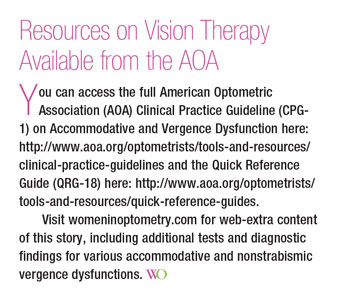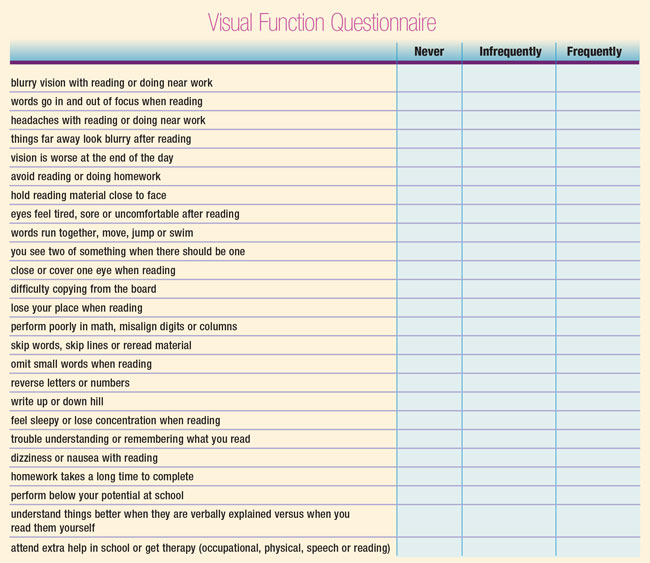

By Tamara Petrosyan, OD, assistant clinical professor at State University of New York, College of Optometry
If you see children and young adults in your practice, a significant percentage of them will have issues with accommodative, binocular and oculomotor function. An estimated 10 percent to 20 percent of the U.S. population has symptoms due to binocular or accommodative dysfunction. Unfortunately, only a small percentage of these individuals are identified, yet alone treated. Adding a few key questions to your history may be all it takes to help identify at-risk patients.
A problem-focused and extensive case history can be one of your most useful tools when trying to identify accommodative, binocular or oculomotor dysfunctions. A visual function questionnaire, such as the one below, can be mailed to the patient or parent, placed on your website or handed to the patient upon arrival. If the patient answers positively for five or more of the below 25 questions, a more in-depth evaluation of visual function should be performed. Make sure that a parent understands that, if possible, he or she should be asking the child to answer these questions instead of filling it out for the child. Young children may not express symptoms because they presume everyone else sees and feels the same way they do, not realizing that not everyone sees words moving on the page or gets a headache after reading.


There are many highly trained and qualified doctors of optometry who perform vision therapy and rehabilitation in each state. We should be making use of these practitioners and their services for intraoptometric referral. They will work with the patient and parent to develop a treatment plan that works for them, whether that may be monitoring, eyeglasses, prisms, in-office therapy or home-prescribed therapy. When referring a patient for an evaluation, be sure to note what specifically the patient is being referred for, when you want the patient to return to you, whether you have an optical in your office and in what form you would like a report to be sent to you.







